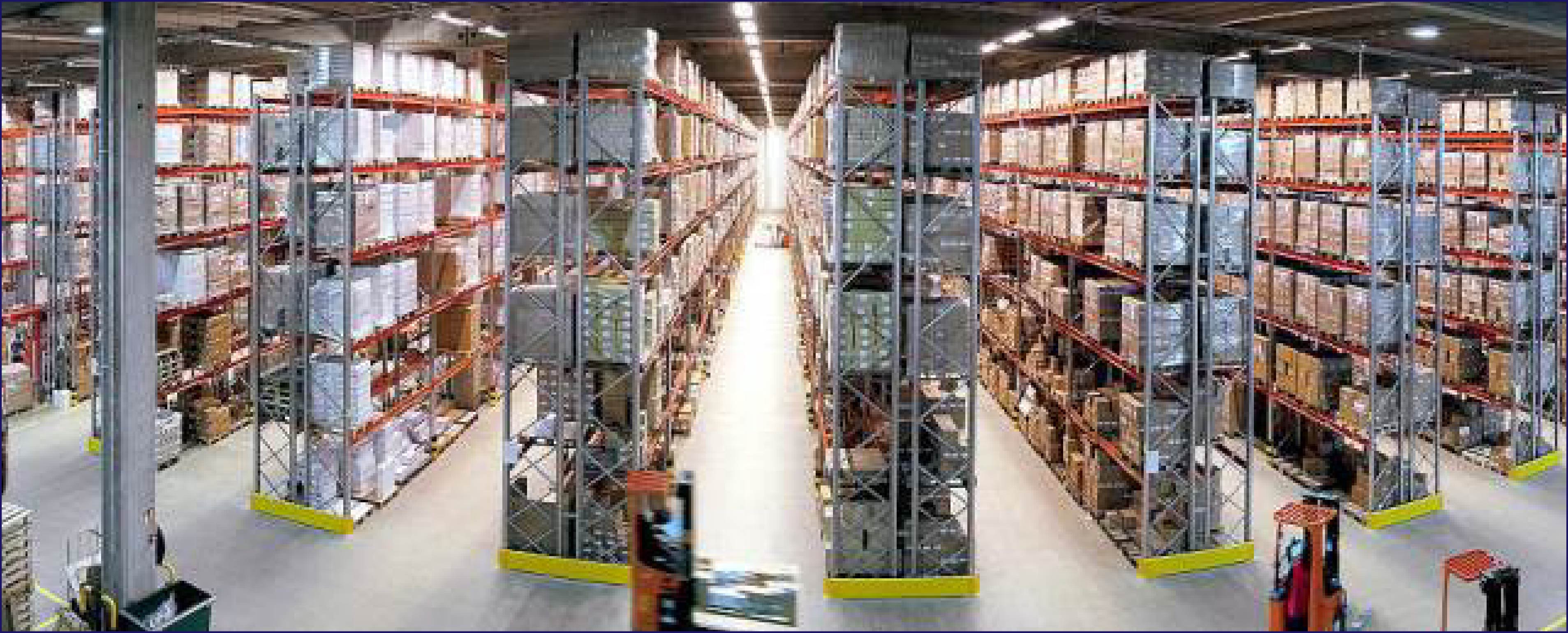Running a retail business is not a piece of cake. There are assets to manage, deadlines to meet, and customer expectations to exceed. To be on top of all this, your warehouse management needs to be a technologically empowered area that functions like a well-oiled machine. This will also help in cost optimization.
The dos of warehouse management
To efficiently manage a warehouse, you need to ensure that there are reduced errors and increased safety. Here are a few tips that will help you in ensuring maximum efficiency.
Every square inch counts
Let’s start with the basics. The layout of your warehouse needs to be structured in a way that will suit the kind of products you stock (depending on size and type), and be constructed so that the aisles are free of congestion, allowing forklifts, carts and inspectors to move about. Make each square inch of space count, as proper utilization of the available space will prevent clustering or mixing up of products later.
The following image shows how the boxes are stacked on industrial pallet racks in an organised manner, and there is still enough space in the aisles for humans and bots to move about freely.

Rack up the heavyweights
For instance, if you’re storing midweight to heavyweight objects, a pallet rack would make the most sense. If there are a lot of smaller objects, bins and lightweight racks can be used. An upright pallet of 96”x24”x29/16” would begin in a price range of about $80 if bought in bulk. Investing in sturdy pallet racks will avoid instances of them collapsing under the pressure.

What’s the smartest route?
Chart efficient picking paths for warehouse workers so that they can work longer without getting tired. Take a warehouse structure like Amazon’s for instance. Despite the sheer magnitude of space, Amazon manages to provide the best picking path so that optimum time is spent on a single object. Amazon’s completely automated systems have a lot to do with this, as they constantly track inventory and handling, thereby mapping out the exact location of objects in correspondence to each other and the position of the picker.
Just robots or ‘cobots’?

Automation in warehouses has now come to a point where lab tested cobots (collaborative robots) are being brought in to work alongside humans. Cobots are much more advanced than robots as they are capable of maneuvering even small objects in warehouses, and need not be caged in defense of the human workers around them. AGVs (Automated Guided Vehicles) and cobots work side by side in several warehouses these days to increase overall efficiency. A cobot that doesn’t require many other accessories to function can cost around 35K. Investing in cobots can be a one time deal, as it will save manpower and divert human resources to where they are needed the most.
Or would you prefer automation tools instead?
Apart from cobots, there are numerous online tools that can help retailers with automating warehouse management. They make it simple to track anything from inventory management to products being handled and shipping carriers used to ship individual products. I’ve listed a few of the best ones in the market. These are quite easy to use as well as customizable to suit the needs of your business.
- Zoho Inventory
- EZ Office Inventory
- Inventory Pro
- Logfire
- Upkeep

Apart from these, shipping carriers like FedEx also offer supply chain management solutions that can automatically keep track of inventory, handling and shipping.
Click here for more information on the best online tools
How important are predictive software?
Predictive measures can be a great asset in warehouse management as they can proactively prevent issues like running out of stock, or intimate the warehouse manager on buying new stock rapidly to face sudden demand. Errors or delays in shipments can also be predicted by online tools like LateShipment Pulse. The support team can address such issues immediately and proactively ensure that there are no unsatisfied customers.
Don’ts of warehouse management
- Do not overwork employees. Employee satisfaction is crucial as you need humans working the warehouse no matter how many robots or cobots you bring in. Remember Amazon’s lawsuit with frazzled and overworked employees? Case in point.
- Don’t under budget, as it inevitably leads to shortage of goods or a cash crunch when you least expect it.
- Do not allow material handlers to ride on forklifts. Forklifts are prone to tip over easily if they are not balanced properly, or if they are used to travel too high when overloaded.
- Avoid riding on a pallet jack to move it. Always push a pallet jack as it reduces the possibility of being run over by the truck, or suffering a back injury because of the pressure.
- Do not use racking shelves as steps. Any unevenness in the floor might prove dangerous. Also, any misalignment can cause pallets to topple over.
- Avoid using untested forklift drivers. A forklift doesn’t exactly work like a car and has several blind spots. They are also extremely unsafe to drive on uneven or wet surfaces.
- Don’t leave returns unattended and gather dust. Figure out why they have been returned and rectify the problem. This will ensure that the volume of returns is brought down, and other products with the same problem can be fixed as well.
- Do not schedule cleaning once a day. Allot cleaning time for every shift so that the floor is clean and unobtrusive for the workers. This increases productivity and also helps avoid stumbling over debris.
- Don’t scrimp on 24/7 support staff whom the workers can contact regarding any questions or issues. Workers need to feel secure in their environment, and have professional support in case of medical emergencies or any other query to management.
Impacts of poor warehouse management:
Warehouse management can drastically impact your bottom line. Some of the impacts of poor warehouse management include
- Increased warehousing costs
- Time consumption when repetitive tasks are not automated
- Near impossibility to keep track of inventory, shipping and returns
- Shipping and delivery delays
- Lost customers
- Inefficient order fulfilling and management
- Imbalance in the inventory that leads to items not being stocked properly
Avoid the impacts of poor warehouse management by implementing technological advancements in your warehouse. Creating good working conditions for employees will also play a major role in the optimization and efficient management of your warehouse operations.
